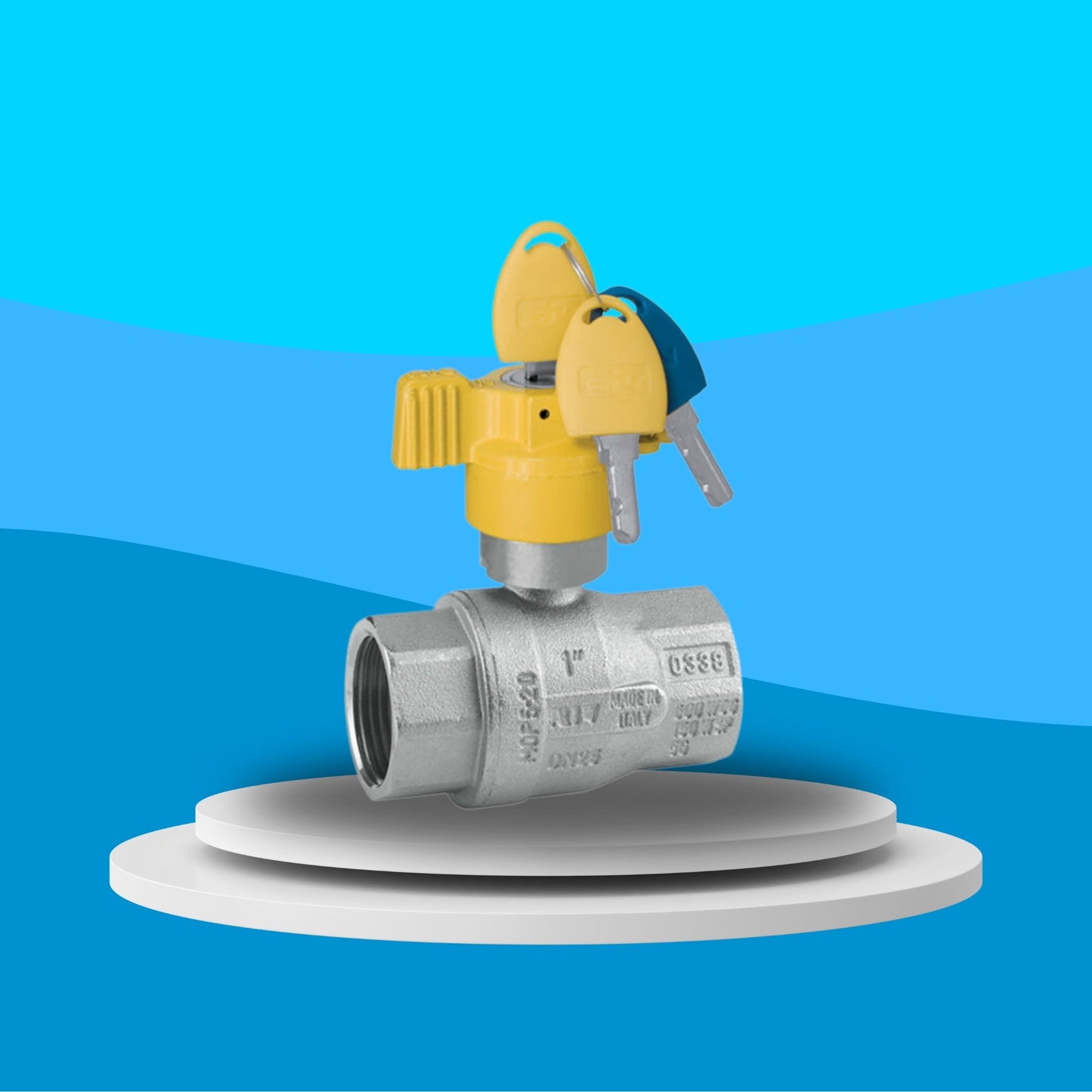Wras Valves
Wras Approved Brass Ball Valve - BSI Gas Approved - HTB Screwed BSPP (Key Locking Device)
Wras Approved Brass Ball Valve - BSI Gas Approved - HTB Screwed BSPP (Key Locking Device)
Couldn't load pickup availability
WRAS Approved | BSI Gas Approved | HTB Rated | Screwed BSPP | Lockable Brass Ball Valve
This WRAS and BSI Gas Approved Brass Ball Valve with HTB Screwed BSPP ends and integrated key locking device provides a high-integrity solution for safe isolation in potable water and gas installations. Certified for use in both WRAS potable water systems and BSI gas applications, this valve is engineered for versatility, security, and compliance with UK standards across multiple utility services.
The HTB (High Temperature and Blowout Proof) design ensures robust performance under elevated temperatures and high-pressure service, offering added safety for critical applications. Featuring a key-operated locking mechanism, this valve is ideal for installations where access control is necessary—such as schools, public buildings, or systems requiring tamper prevention and safety assurance.
Fitted with screwed BSPP (British Standard Pipe Parallel) connections, the valve offers fast and secure installation, and the brass body provides strong resistance to corrosion, wear, and mechanical stress. This full bore valve ensures minimal pressure drop, allowing efficient system performance without compromise.
WV - 7514
Share

FAQ's
What is the difference between a valve and an actuator?
What types of actuators are available?
The main types of actuators are:
Pneumatic actuators – use compressed air for fast, reliable operation.
Electric actuators – use electrical power for precise control.
Hydraulic actuators – use fluid pressure for high-torque applications.
Each type offers unique advantages depending on the environment, media, and system control needs.
How do I choose the right actuator for my valve?
To select the correct actuator, consider:
Valve type and torque requirement
Power source available (air, electric, or hydraulic)
Operating environment (temperature, humidity, hazardous area)
Control signal type (on/off or modulating)
Matching actuator torque and compatibility with the valve’s ISO mounting ensures reliable performance.
What are the main types of valves used in automation?
The most common valves in automated systems include:
Ball valves – for tight shutoff and quick operation.
Butterfly valves – for larger flow control with compact design.
Globe valves – for precise throttling and flow regulation.
Check valves – to prevent backflow.
Gate valves – for full bore flow isolation.
What’s the difference between a double-acting and spring-return actuator?
Double-acting actuators use air (or power) to both open and close the valve.
Spring-return actuators use air to open (or close) the valve, and a built-in spring to automatically return it to a safe position when power or air is lost — ideal for fail-safe operation.
How often should valves and actuators be serviced?
Regular maintenance intervals depend on operating conditions, but a good rule of thumb is to inspect every 6–12 months.
This includes checking for leaks, lubrication, seal wear, and actuator responsiveness to prevent unexpected downtime.

